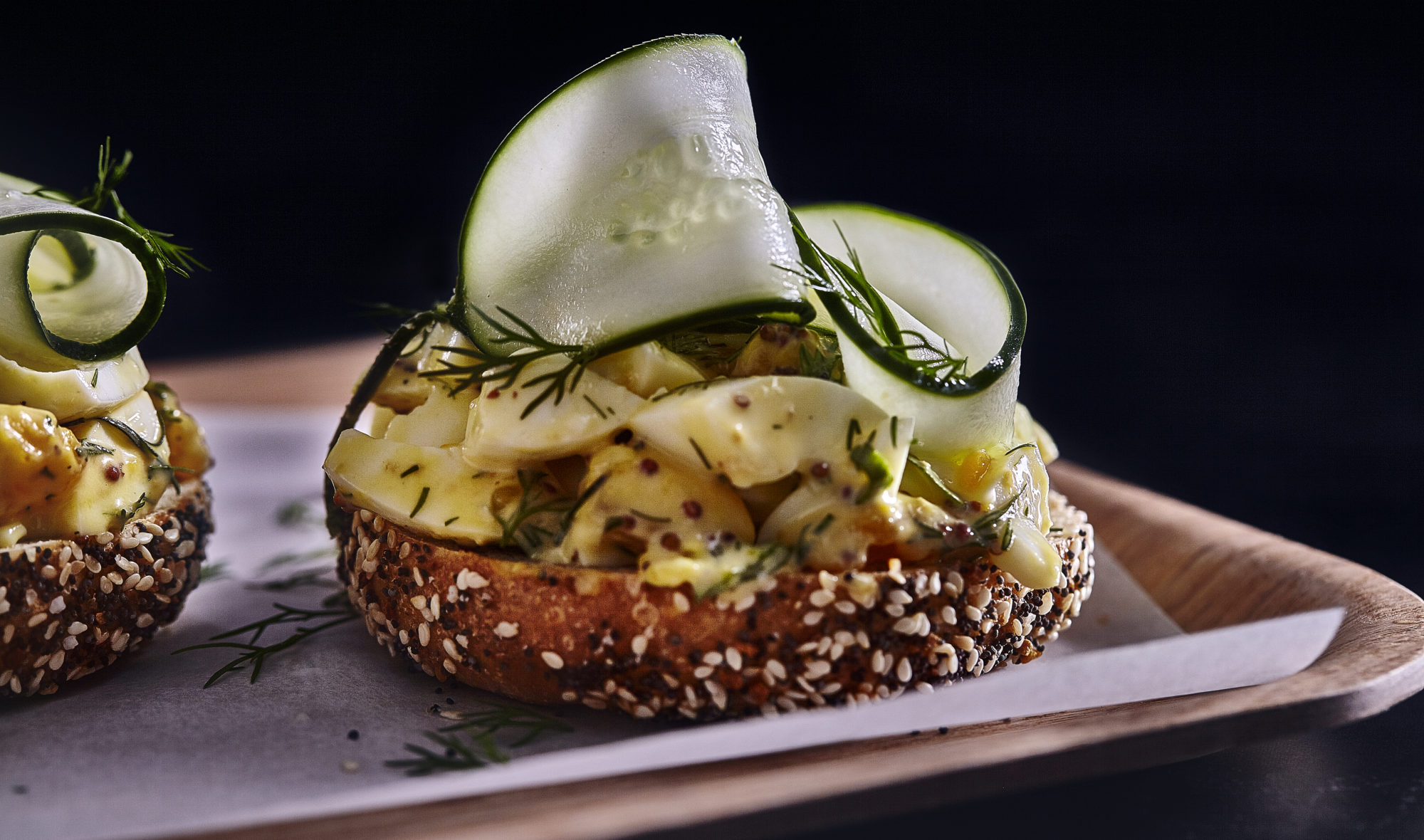
💥 SAVE 54% on the PN Nutrition Certification + Coaching Career Kickstarter Course! Ends Friday.

💥 SAVE 54% on the PN Nutrition Certification + Coaching Career Kickstarter Course!

Cucumbers are thought of and used as a vegetable, but they’re actually a botanical berry, and a member of the gourd family. Seasonal in the summer months, raw cucumbers are a refreshing addition to salads and sandwiches, and they make a tasty, simple snack. Cucumbers can be pickled and, if traditionally fermented, offer an added bonus of probiotics. They’re mostly water, so cucumbers are low in calories. They’re not nutrient-dense, but they do offer lots of vitamin K, plus small amounts of vitamin C, magnesium, potassium, and manganese.
Cucumber is a member of the gourd family, and the plant itself is a creeping vine. The cucumber we eat is actually a botanical berry, but it’s typically eaten as a vegetable. (Similar to tomatoes and squash in this way.)
Most common preparations are either raw, or pickled – either whole or in slices.
Cucumbers are usually more than 90% water. Their crisp and refreshing taste and texture is especially welcome during the summer months, when they are in season.
While different varieties exist, we can generally think of cucumbers as falling into one of three categories: Slicing cucumbers, English cucumbers and Pickling cucumbers.
Cucumbers have an oblong shape, with green skin and white flesh. The size varies greatly by type.
Slicing cucumbers are bigger, rounder, and thick-skinned than their counterparts. The skin may be a bit bumpy; sometimes they also have a waxy coating on them to support preservation. Inside, this cucumber has meaty white flesh and seeds.
English cucumbers are and longer narrower cucumbers by comparison. You’re likely to find them wrapped in plastic at the grocery store. They have a smooth, thin, edible skin and no seeds.
Pickling cucumbers are small and stubby. They may sometimes be found in bulk, as large quantities are often used for pickling.
One half-cup of sliced cucumber (with peel) contains approximately 8 calories, 0.34g of protein, 0.06g of fat, 1.89g of carbohydrates, 0.30g of fiber and 0.87 g of sugar.
Cucumbers are incredibly water-dense. That half-cup of cucumber slices also contains 49.52 grams of water!
Cucumbers are good source of vitamin K. Magnesium, potassium, and manganese are also found in cucumbers.
Traditionally fermented pickled cucumbers, made with salt contain beneficial live cultures – aka probiotics – which are known to promote gut health. For the pickles to offer this benefit, they must not be pasteurized. Look for pickles in the refrigerator section of your grocery store (not on the shelf) and check the ingredients. They should contain only cucumbers and salt – no vinegar. Also look for words such as “raw”, “non-pasteurized”, or “contains live cultures.”
Look for cucumbers that are firm, not mushy, and have a clean, bright exterior with minimal blemishes.
Keep in mind that quality is important for pickling: fresh, crisp cucumbers are necessary for crisp pickles.
Store cucumbers in the vegetable crisper in your refrigerator in an open paper bag. They are best used within 3-5 days. As they lose their freshness, they can become mushy or slimy.
If you have Slicing cucumbers, you may choose to remove the skin with a vegetable peeler or a sharp paring knife. (If you’re keeping the skin on, be sure to wash the cucumber well first.)
English cucumbers can be simply rinsed before eating.
Once washed, cut the cucumbers however you like. Thin, round slices are a great, easy option. If you want to get a bit fancier, try cutting them into matchsticks, julienne-style.
Once washed and cut, your cucumbers are ready to eat. Use them in salads, sandwiches, or sushi rolls, or enjoy them raw — perhaps with some cottage cheese, hummus, or your favorite dip on the side.
Because of their fresh, cooling effect, cucumbers can be a nice accompaniment for rich or spicy food. (Case in point – the Greek dip “Tzatziki” or the Indian condiment “Raita” both of which are made primarily with yogurt and cucumber). Try making your own cucumber-yogurt dip with your favorite fresh herbs. Then serve it alongside grilled lamb, baked eggplant or your favorite curry.

This green gazpacho is a twist on a classic - ripe yellow or green tomatoes are used instead of red, and the result is a cool, creamy, delicious soup that takes only minutes to whip up.
Prep Time: 0 minutes Cook Time: 10 minutes Yield: 4 servings
Add all ingredients except for basil or mint to a blender or food processor and process until smooth. You can leave a little texture if desired.
Portion into individual bowls, and top with a drizzle of olive oil, a sprinkle of fresh chopped herbs, and a few cracks of pepper.
Serve chilled. Enjoy!
Precision Nutrition’s Encyclopedia of Food expands every single month as we highlight new foods and showcase beautiful food photography. If you’d like to stay up to date, simply click this link. From there, we’ll send you a FREE copy of our recipe book. We’ll also let you know when new and delicious foods are added to the site.
Cucumbers are thought of and used as a vegetable, but they’re actually a botanical berry, and a member of the gourd family. Seasonal in the summer months, raw cucumbers are a refreshing addition to salads and sandwiches, and they make a tasty, simple snack. Cucumbers can be pickled and, if traditionally fermented, offer an added bonus of probiotics. They’re mostly water, so cucumbers are low in calories. They’re not nutrient-dense, but they do offer lots of vitamin K, plus small amounts of vitamin C, magnesium, potassium, and manganese.